Tod helps to bring FINAL FANTASY XVI sword to life in the Tower of London
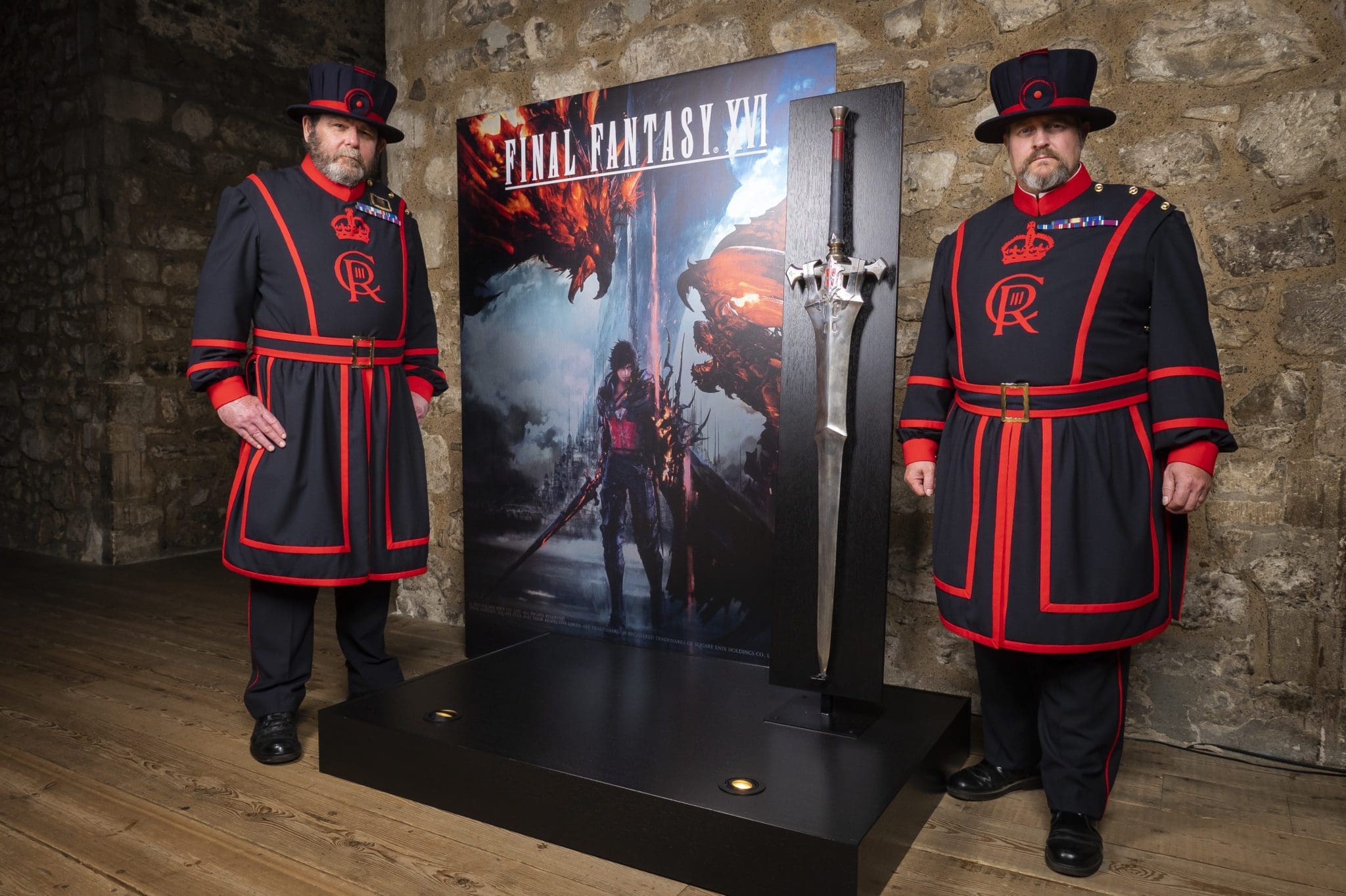



Tod helps to bring FINAL FANTASY XVI sword to life in the Tower of London
I am incredibly lucky because I love what I do and to be honest I enjoy every day, but sometimes I am too busy to enjoy the moment and the contract to make a sword for the latest iteration of the Final Fantasy series, XVI was one of those.
Every iteration of the game has the protagonist wielding an implausibly massive sword, a different one each time and for the release of this game I was approached to recreate the sword for real which was then going to be displayed in the Tower of London.
This last point more or less passed me by, or at least I didn’t really think about it; but I have now. So I made a sword that is displayed for the next month (June 22 – July 19) in the Tower of London in the Armour Hall. Make no mistake, for guy like me, this is very cool indeed. In this room is the best work, of the best armourers of medieval Europe. Pieces made for Kings. In amongst this amazing company I now have a sword I made (for a while), so yes, that is really very cool indeed.
So cool I had to make a film about it for my Tod’s Workshop YouTube Channel which you can find here:
Square Enix, the creators of the game were a dream to work for and as part of the process have put together all sorts of social media posts and one of those is the blog post below, from their web site
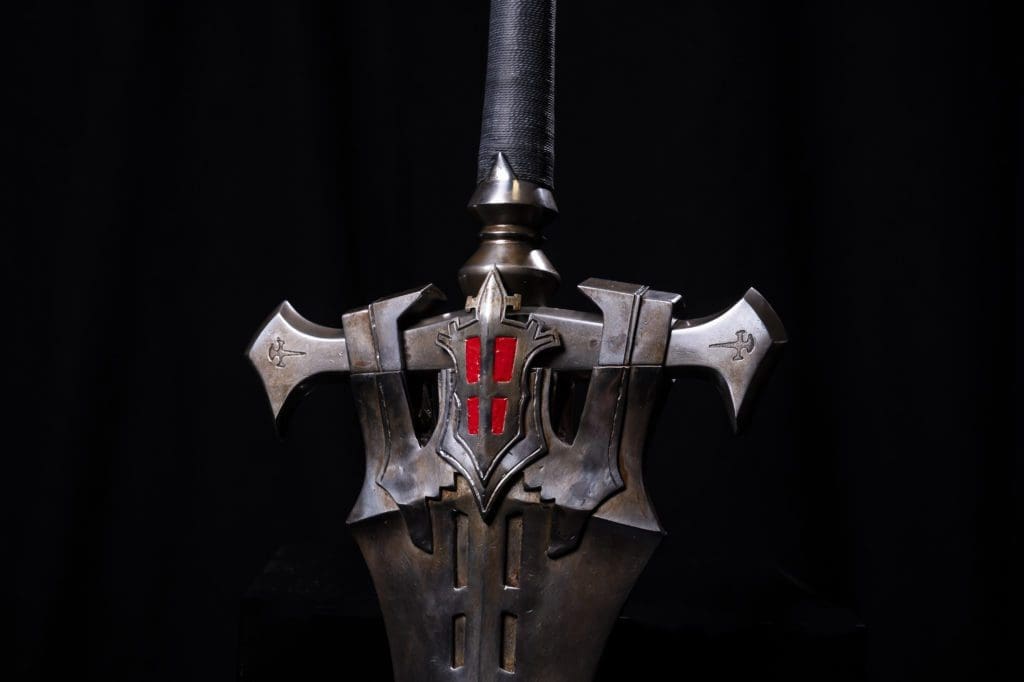

Bringing FINAL FANTASY XVI to life in the Tower of London
We speak to master weapons-maker Tod Todeschini about Clive Rosfield’s Invictus sword, and how he brought it from FINAL FANTASY XVI’s Valisthea into the real world.
If you head over to the Tower of London, you’ll see a very special sword currently on display: Invictus from FINAL FANTASY XVI!
Thanks to a partnership between Square Enix (that’s us!) and Royal Armouries (a world-renowned museum that houses the United Kingdom’s national collection or arms and armours) Clive Rosfield’s impressive blade is on display until July 19. It’s the first time a weapon from a video game has been featured alongside real-world weapons and armours owned by kings!
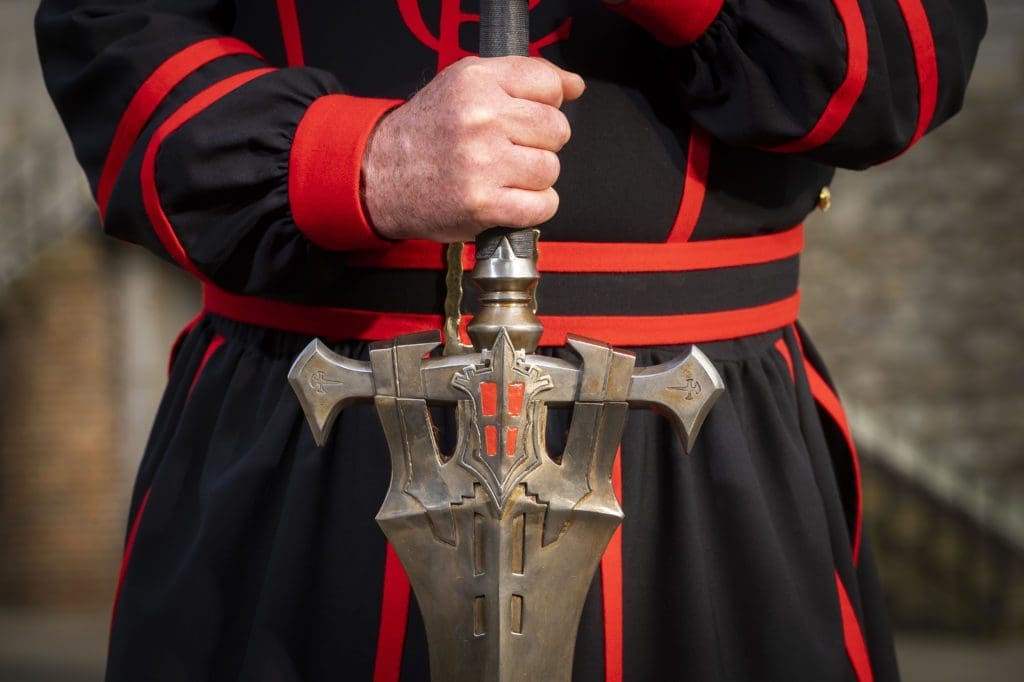

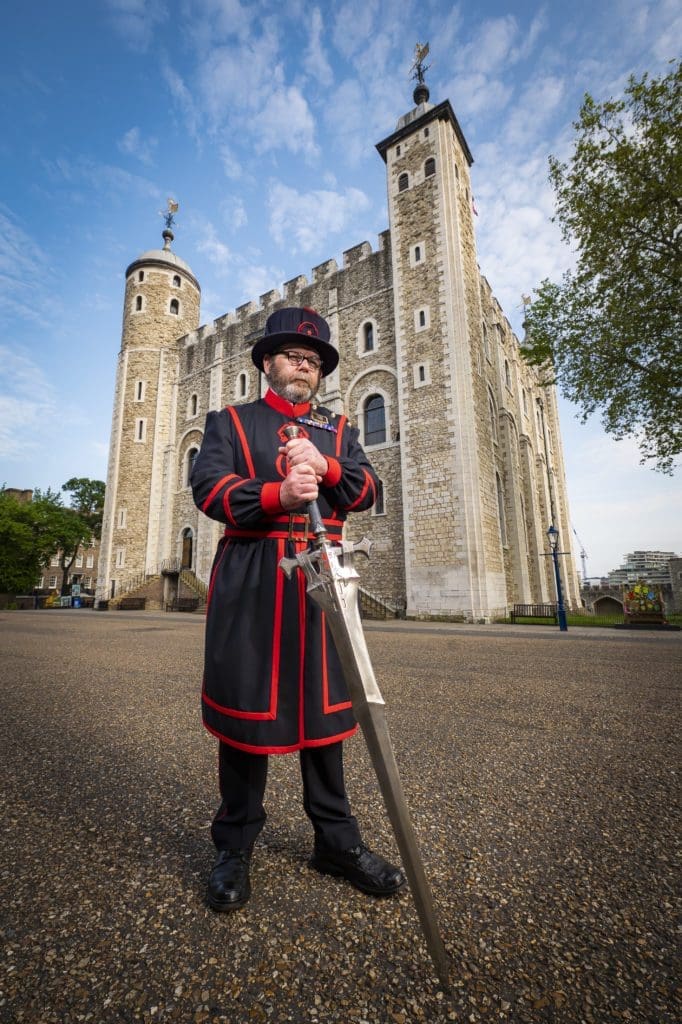

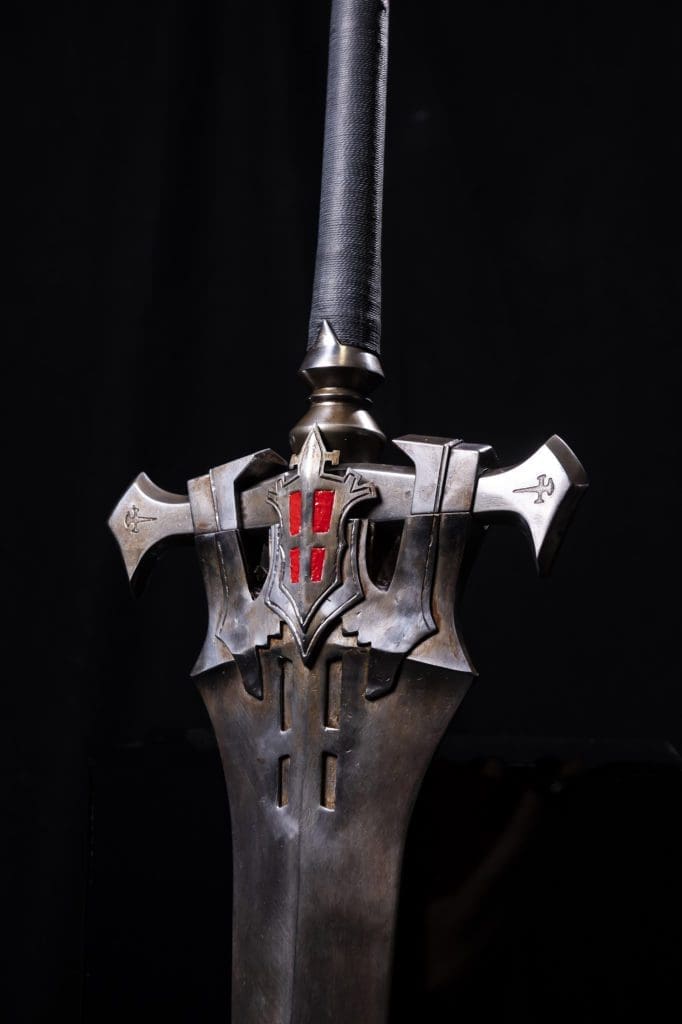

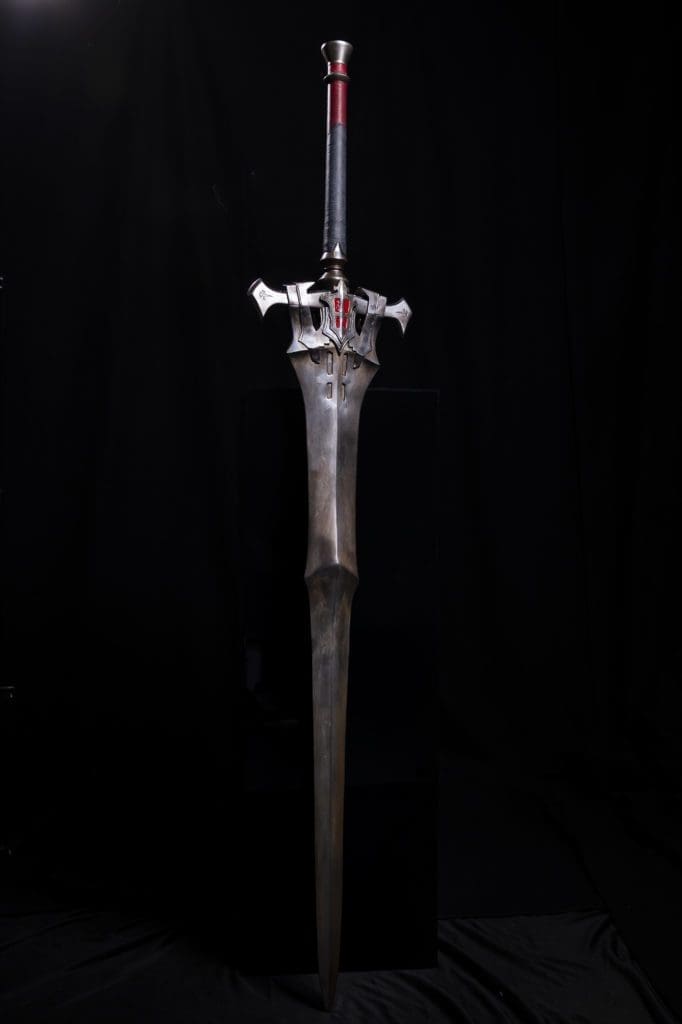

As you can see, it’s an extremely impressive piece. That’s thanks to master craftsman Tod Todeschini, who created the sword. So how did he make such a quality weapon, and how effective would it be in the real world? We spoke to him to find out:
Q: Hi Tod. How did you get into creating weapons?
I used to work in the special effects industry. I worked in a workshop where there was every imaginable tool available, and every imaginable skill from other people around me.
At the same time, I was doing re-enactments and you could buy nice clothes, shoes, stuff like that, but you couldn’t buy any nice knives. So, I just made my own and never stopped.
Now I’m a swordsmith and medieval weapons maker. My work is very high end, so I make a lot for collectors and re-enactors, and occasionally more fantasy weapons for film, TV and games.
Q: How familiar with FINAL FANTASY were you before you started this project?
I’m not a game player myself but I knew of the series.
There’s another YouTuber – Matt Easton of Schola Gladiatoria – who’s a very serious medieval weapons historian. He happened to be doing another project with Royal Armouries, so when they approached him for recommendations for this job, he recommended me.
Q: How much reference material did they send you?
In my day to day work, I’m often working out of books, so I might have a single image – and it might not even be a good one. In fact, it could be a poor quality image of a degraded object that’s a few hundred years old, so a big part of my job is filling in the gaps.
For this, I had six images to work from. One was a wireframe drawing with the dimensions of the sword on it. The other five were screenshots, and quite pixelated when blown up – so I did have interpret. But that’s generally what I do anyway.
And the fact that’s it’s a fantasy object is not a problem, you can see what’s going on from the shadows, the lines, the forms.
Q: How does the Invictus compare to a historical sword?
Actually, I’ve done a video with Matt Easton specifically on this subject:
So the size of it is not abnormal… well, the length is not unusual but there’s a whole class of medieval swords that did fall exactly into that kind of length. They’re called Montante or Zweihanders – two handed swords.
They have a particular role, which is defending bridge heads – literally a bridge, or a doorway, or a space like that. They are about keeping everybody as far away as possible with a very long sword. The grip length is also very true to that… but that’s where any similarity with real world weapons ends.
For example, the FINAL FANTASY sword is not set up for cutting – the blade sections are just too big and bulky. That’s fine, because bizarrely enough, some swords aren’t meant for cutting. If you think of something like a rapier, for example, that’s a stabbing weapon, not a slashing weapon.
So the fact it’s not really made for cutting is not an issue per se, but the sheer mass of it means that a normal, ordinary human being, with normal, ordinary earth materials, in normal, ordinary earth gravity, wouldn’t be able to move that sword fast enough to defend themselves.
So if you asked me: would it be any good in a fight today or 500 years ago? No – it’d be a waste of time. But then I don’t live in Valisthea (laughs).
Q: So how much longer is it than a real sword?
Well, a 15th century knight would use what’s called a ‘hand and a half’ – a 34 to 36 inch blade. This thing is somewhere around 48 inches.
Those 12 inches – that foot – actually make a big difference because that means it’s four feet away from your wrist. The leverage is just huge. That means you need a much longer grip to accommodate it.
Q: How much heavier is it?
That’s actually a very relevant question because a normal hand a half sword would be 3 -3.5 pounds (1.4 – 1.6 Kg). This sword comes in at around 32 pounds – 10 times the weight!
So it’s basically more of a club than a sword. Of course, the sheer weight means that as a club it’s slow to move, and you want a weapon to move quickly, right? So it’s definitely cool visuals over functionality (laughs).
Q: It’s an incredibly high quality weapon. How did you make it?
The process is making it involved a little bit of prediction of what’s going to happen in the future because that piece ended up being heavy.
The way I make swords is predominantly on machines, which are fixed down, and you are holding the sword in your hands. You can do that for a bit, but you can’t do it for a long time with something of this weight – and it was obvious that was going to be the case. So, I effectively had to make the sword in sections.
The other thing is that it’s so long, it wouldn’t fit in my workshop! My machines are closer to the wall than that because I typically don’t make things this big.
So, I made that lower blade, which is around 65 centimetres long, and that was fine – I got it clean and finished. Then I welded a long peg onto it, which effectively would go all the way to the tang, which meant the lower blade was basically done.
But the upper blade, where it thickens over the V-shaped ridge and comes up towards the guard, would have been a massively heavy bit of steel – 20-25 kilograms in its own right. I wasn’t going to be able to hold that!
Instead, it’s made of two shells with the help of an armourer friend, Ash. I made it as a hollow section, welded it onto the lower section and then cleaned up the joint. So now I had the full blade, not stupidly heavy and finished from the tip up.
Next, I made the guard, which plugs over the peg. With this sword, the blade encapsulates the guard, which you can’t really do in real life. It’s physically just not a manufacturable object. So what I did was make two lugs at the top of the blade, so the guard slips on, the caps go on and the handle just stacks on top of that. Then the whole lot is screwed together – effectively so it can be dismantled.
Q: A particularly cool detail is how the blade is a bit weathered. How do you achieve that effect?
Well, I asked what condition the sword should arrive in. Because if this this is Clive’s sword, he probably didn’t buy it from the sword shop yesterday. That meant I needed to age it down.
Normally that involves putting each piece in some pretty aggressive chemicals, but as this sword is so big, it was more a case of wiping chemicals on.
Of course, it’s important to do it right for it to look convincing. For example, if you buy a wallet from a shop and want it to look 10 years old, you have to consider that a lot of things have happened to the wallet in that decade. It’s not just one event, it’s had 10 years of life, so you couldn’t just attack it with a chemical and say: “there you go.”
The same is true for the sword. It’s had a life and so to reflect that, I used different chemicals and removed them at different rates and quantities. So you build up a pattern of layers in essence – some bits will be better cleaned than others, so it gives the impression of an aged, used object.
Q: It sounds like it’s a tricky thing to get right!
You do see this sort of thing done quite badly sometimes. For example, something you see a lot on film sets is when somebody wants to make a bit of timber look old, so they just hit it with a blowtorch. But wherever two bits join, you get a white line where the flame doesn’t go. You can see it a million miles away – it’s just sloppy work.
You’ve got to build in those layers of ‘time’ in essence. That gives it a sense of having been used, and actually having some history to it.
So if the Invictus was sitting on a shelf 15 metres away from the public, you could probably have gone with a very light brown aerosol mist of spray paint and people would go: “yeah, looks old.” But as soon as you get close to it, that kind of laziness doesn’t work anymore – you’ve really got to put the work in.
Q: What’s the blade made out of?
A sword is generally made of spring steel, but this one is made from mild steel.
There are a few reasons for this – firstly spring steel has its problems when you try to weld it and so on – it doesn’t like it very much. Mild steel looks exactly the same, but the material properties are different.
If you were going to actually use it as a real weapon, you would use the spring steel, but this thing was never going to be operational.
Q: What kinds of machines do you use to make weapons? Presumably you’re not blacksmithing it?
I generally don’t blacksmith stuff. I mean, I do a little bit, but I find other methods faster. In the case of this, the proper name would be a knife grinding linisher – bit like a belt grinder.
It’s a long sanding belt that just goes round and round, and you just have different wheels and flat areas that you can work on. You’re literally just holding your chunk of steel and just grinding material away – sort of like 3D sculpting in steel.
Q: Do you think it would be possible to make the Invictus in a more traditional way, or is it too fantasy for that?
No, it absolutely would be possible. You could do it completely handmade, but then you have the classic issue of time.
You’d have a massive piece of steel, which you could forge. But then all the panel work on the front would have to be carved away, literally layer by layer with chisels. As you can imagine, doing that and getting it smooth would be a lot of work.
So yes, it’s possible… but it would take something like two years instead of two months!
Q: What was the most challenging thing about creating the sword?
It sounds mundane, but honestly it was the size. That really affects everything.
There were certain days where I was absolutely shattered because you have to be precise because all angles are continuously changing. You have to reprogram your body to go through the necessary movements, but you lose finesse and control when lifting something so heavy – your hands can start shaking for example.
I did more hand-grinding on a bench than I’ve done in the last 15 years (laughs)!
Q: Finally, where can people go if they want to learn more about your work and weaponry?
You can check out the rest of this website and also my shops, where I sell high quality reproduction medieval swords, daggers, knives and crossbows.
You can check it out at Tod’s Workshop on YouTube:
https://youtube.com/@tods_workshop
Many thanks to Tod for sharing his knowledge – and his work on the Invictus sword, which looks absolutely phenomenal. If you’re in London, you can see it for yourself in the Tower of London from now until July 19th.
